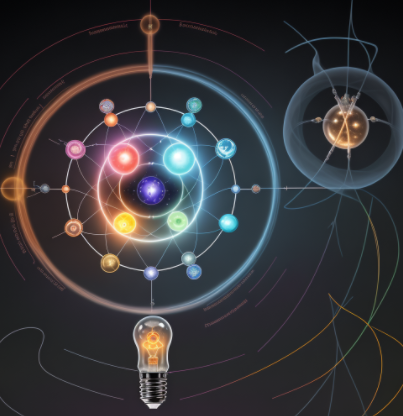Introduction
Have you ever wondered why a hot cup of coffee eventually cools down, or how a plant transforms sunlight into the energy it needs to grow? These everyday phenomena are perfect examples of energy changes in systems, a fundamental concept that helps us understand how our universe works.
Energy is constantly flowing and transforming all around us, from the smallest atomic interactions to the largest cosmic events. Understanding these energy changes is crucial for scientists, engineers, and anyone interested in how the natural world operates.
This article explores the fundamental principles of energy changes in systems, their various forms, and their practical applications in both natural and human-made contexts.
Types of Energy and Their Transformations
Kinetic and Potential Energy
The most basic forms of energy can be categorized into kinetic (motion) and potential (stored) energy. A rollercoaster perfectly demonstrates both types as it moves through its track.
- At the top of the track, the rollercoaster car possesses maximum gravitational potential energy
- As it descends, this potential energy converts to kinetic energy
- The continuous transformation between these energy types creates the thrilling experience we enjoy
Chemical and Electrical Energy
Energy transformations in biological and technological systems often involve chemical and electrical energy conversions.
- Batteries convert chemical energy into electrical energy through controlled chemical reactions
- Plants convert solar energy into chemical energy through photosynthesis
- Our bodies transform chemical energy from food into mechanical and thermal energy
Energy Transfer and Conservation
Heat Transfer Mechanisms
Energy transfer through heat occurs via three main mechanisms:
- Conduction: Heat transfer through direct contact between materials
- Convection: Heat transfer through fluid movement
- Radiation: Heat transfer through electromagnetic waves
Each mechanism plays a crucial role in natural and engineered systems, from weather patterns to home heating systems.
The Conservation Principle
The fundamental law of energy conservation states that energy cannot be created or destroyed, only transformed from one form to another.
- Total energy in an isolated system remains constant
- Energy can change forms but never disappears
- Understanding this principle is crucial for designing efficient systems
Practical Applications and Implications
Renewable Energy Systems
Modern society increasingly relies on understanding energy changes for sustainable power generation:
- Solar panels convert light energy into electrical energy
- Wind turbines transform kinetic energy into mechanical and then electrical energy
- Hydroelectric dams harness gravitational potential energy of water
Energy Efficiency
Knowledge of energy transformations helps us design more efficient systems:
- Insulation reduces unwanted heat transfer in buildings
- LED lights convert electrical energy to light more efficiently than traditional bulbs
- Electric vehicles optimize energy recovery through regenerative braking
Resources for Educators and Students
Our Energy Changes Activities and Worksheets Bundle provides comprehensive materials for exploring these concepts in the classroom, including:
Comprehensive Guide and Activities for Understanding Energy Changes in Systems
Conclusion
Understanding energy changes in systems is fundamental to comprehending how our universe functions. From the simple cooling of a hot drink to the complex operations of renewable energy systems, energy transformations surround us constantly.
By mastering these concepts, we can better design efficient systems, develop sustainable technologies, and solve the energy challenges of tomorrow. Whether you’re a student, educator, or curious learner, the study of energy changes offers invaluable insights into the workings of our world.
The principles discussed here demonstrate that energy, in its many forms, connects all natural and human-made systems in an intricate dance of continuous transformation and conservation.



